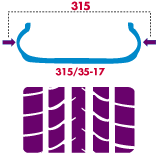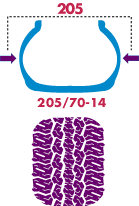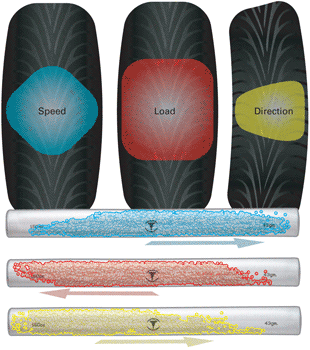

Advantages of Correct Tire Inflation
Maintaining correct tire inflation pressure helps optimize tire performance and fuel economy. Correct tire inflation pressure allows drivers to experience tire comfort, durability and performance designed to match the needs of their vehicles. Tire deflection (the tread and sidewall flexing where the tread comes into contact with the road) will remain as originally designed and excessive sidewall flexing and tread squirm will be avoided. Heat buildup will be managed and rolling resistance will be appropriate. Proper tire inflation pressure also stabilizes the tire's structure, blending the tire's responsiveness, traction and handling.
Correct tire inflation pressure allows drivers to experience tire comfort, durability and performance designed to match the needs of their vehicles.
Can you easily identify which tire is 30% underinflated? Here is what they would look like in the morning parked in your garage.
Disadvantages of Underinflation
An underinflated tire can't maintain its shape and becomes flatter than intended while in contact with the road. If a vehicle's tires are underinflated by only 6 psi it could lead to tire failure. Additionally, the tire's tread life could be reduced by as much as 25%. Lower inflation pressure will allow the tire to deflect (bend) more as it rolls. This will build up internal heat, increase rolling resistance and cause a reduction in fuel economy of up to 5%. You would experience a significant loss of steering precision and cornering stability. While 6 psi doesn't seem excessively low, remember, it usually represents about 20% of the tire's recommended pressure.
Disadvantages of Overinflation
An overinflated tire is stiff and unyielding and the size of its footprint in contact with the road is reduced. If a vehicle's tires are overinflated by 6 psi, they could be damaged more easily when running over potholes or debris in the road. Higher inflated tires cannot isolate road irregularities well, causing them to ride harsher. However, higher inflation pressures usually provide an improvement in steering response and cornering stability up to a point. This is why participants who use street tires in autocrosses, track events and road races run higher than normal inflation pressures. The pressure must be checked with a quality air gauge as the inflation pressure cannot be accurately estimated through visual inspection.


